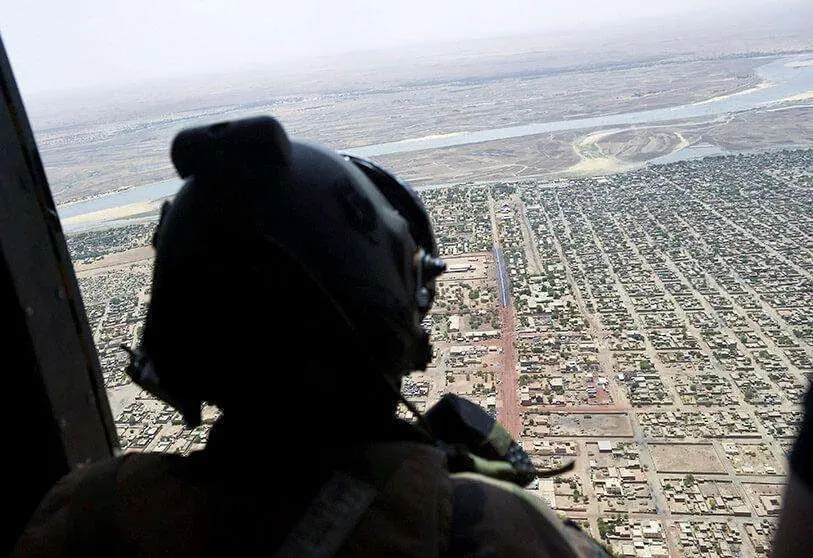Controversy over Barkhane's bombing in central Mali

On January 3, an air strike was carried out in the town of Bounti, in Mopti province (central Mali), in which allegedly 20 civilians were killed on impact. Allegedly, civilians were at a wedding.
On January 8, the Malian Ministry of Defense reported that Barkhane's French operation had neutralized a group of terrorists from Katiba Serma (part of the JNIM group) in Mopti province, near Douentza. These contradictory versions have stirred up a controversy in Mali, with the opposition demanding to know what really happened. In a subsequent statement, the Defense Staff has confirmed that the bombs did fall on Bounti, but that they did not fall on a wedding and that there has been no collateral damage. They state in the communiqué that this operation was carried out on the basis of an intelligence maneuver lasting several days and that one hour before the attack a drone plane detected a motorcycle with two individuals who subsequently joined a group of 40 adult men in an isolated area. The observation lasted an hour and a half and it was verified that there were no women or children.
According to the Fula people association Tabital Pulaaku, on the day in question, between 14:30 and 15:00 three bombs fell in the vicinity of a marriage celebration between two members of the Fula community, which is the majority group in the area. Marriages in this community are characterized by the separation of men and women during the celebration. Médecins Sans Frontières, which works in the area, said in a statement that they have received several patients at their health center in Douentza near Bounti. The wounds of these patients, men over 60 years old, show metal shrapnel injuries, which would match those of the explosion they describe. The report also shows that some civilians had bullet wounds, which would not correspond to the association's version. Médecins Sans Frontières makes it clear that it has not been present at the scene of the events, so it cannot confirm or deny any of the versions. Other civilians present at the wedding who allegedly managed to flee claim to have seen the three bombs fall. MINUSMA has opened an investigation to help clarify the facts.

French Defense Minister Florence Parly has appeared before the National Assembly's Defense Committee on this matter, reaffirming that the operation carried out by Barkhane was aimed at a terrorist group affiliated with Al-Qaeda and that they had sufficient intelligence collected to ensure that those neutralized belonged to the terrorist group. Parly accuses the jihadist group of trying to manipulate public opinion, arguing that the rumors on social networks have arrived just as France is considering reducing its troops on the ground.
Two weeks after the incident, the terrorist group JNIM issued a statement saying that, in response to the "brutal" bombing, they had stepped up several attacks against Barkhane and MINUSMA forces to "avenge the innocent". On January 15, the UN announced the death of another blue helmet from a landmine. These same explosives are the ones that killed five French soldiers on December 28 and January 2.
Despite the controversy over what the true version of the incident is, what is clear is that in an area with so many actors of violence it is extremely difficult to differentiate between civilians, militiamen and members of armed jihadist groups. This is especially true when there are radicalized members of the community, others who are sympathizers of some militia that in turn collaborates with the jihadists, others who act for money, and others who are simply civilians who have joined some group on occasion to defend themselves from another. The definition of " jihadist " is not so clear. The region where the alleged attacks have taken place is in Mopti, a region bordering Burkina Faso and northern Mali. This region has been plunged into a spiral of violence since 2012. First, by the Tuaregs who were claiming part of Mopti for the Azawad; then, by the jihadist groups of northern Mali such as the MUJAO. Third, by the Malian Armed Forces, who accused part of the Fula community as accomplices to the jihad. Finally, Mopti has been plunged into a new cycle of inter-community and jihadist violence since 2015, led by Dogon militias such as Dan Na Ambassagou and jihadist groups such as Katiba Macina or the Islamic State of the Great Sahara, which have exploited inter-community tensions to recruit followers of the Fula people community. The French operation of Barkhane and his Takuba Force is also very present in the region; since early 2020, it has been the priority region for anti-terrorist operations. In recent weeks there have been dozens of episodes of violence, attacks and assaults by armed groups in the area.











